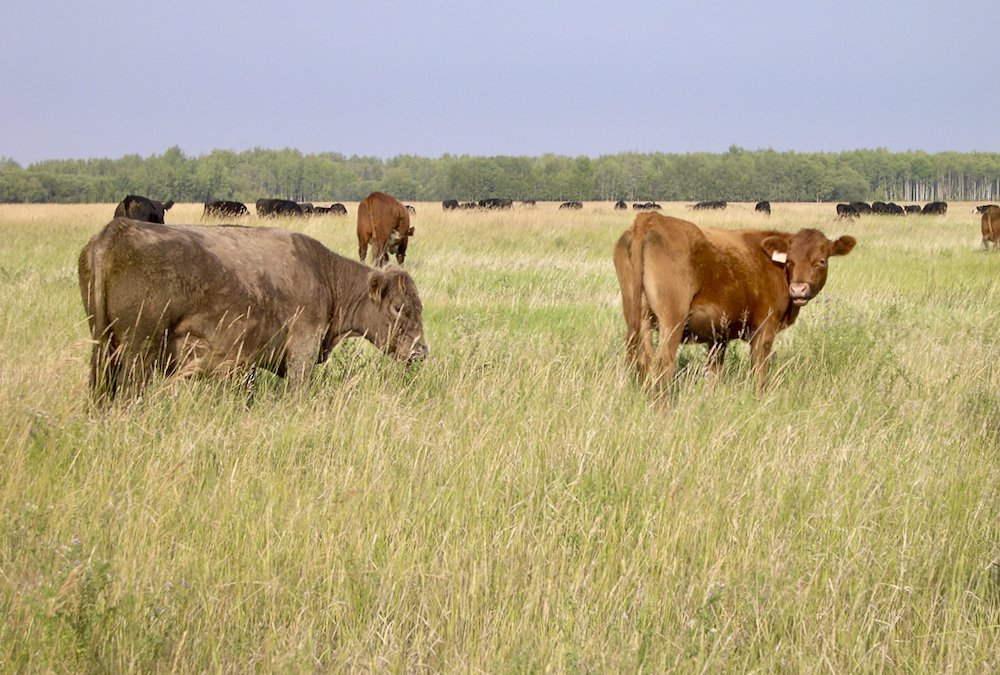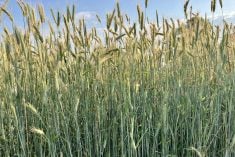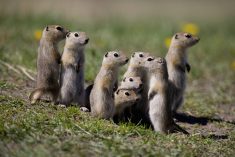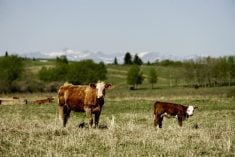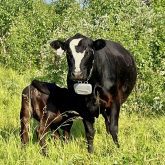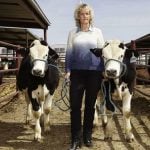Grazing mature cattle on mature forages and crop aftermath late into fall are options that reduce overall feeding costs. Kaliel and Kotowich (2002) reported that 60 per cent of production costs in a cow-calf operation are associated with winter feeding. Extending the grazing season reduces costs but there are limitations on what can be done.
But maintaining cow condition scores and meeting the nutritional requirements of both the cow and calf (in utero) must be considered.
Animal requirements
Read Also
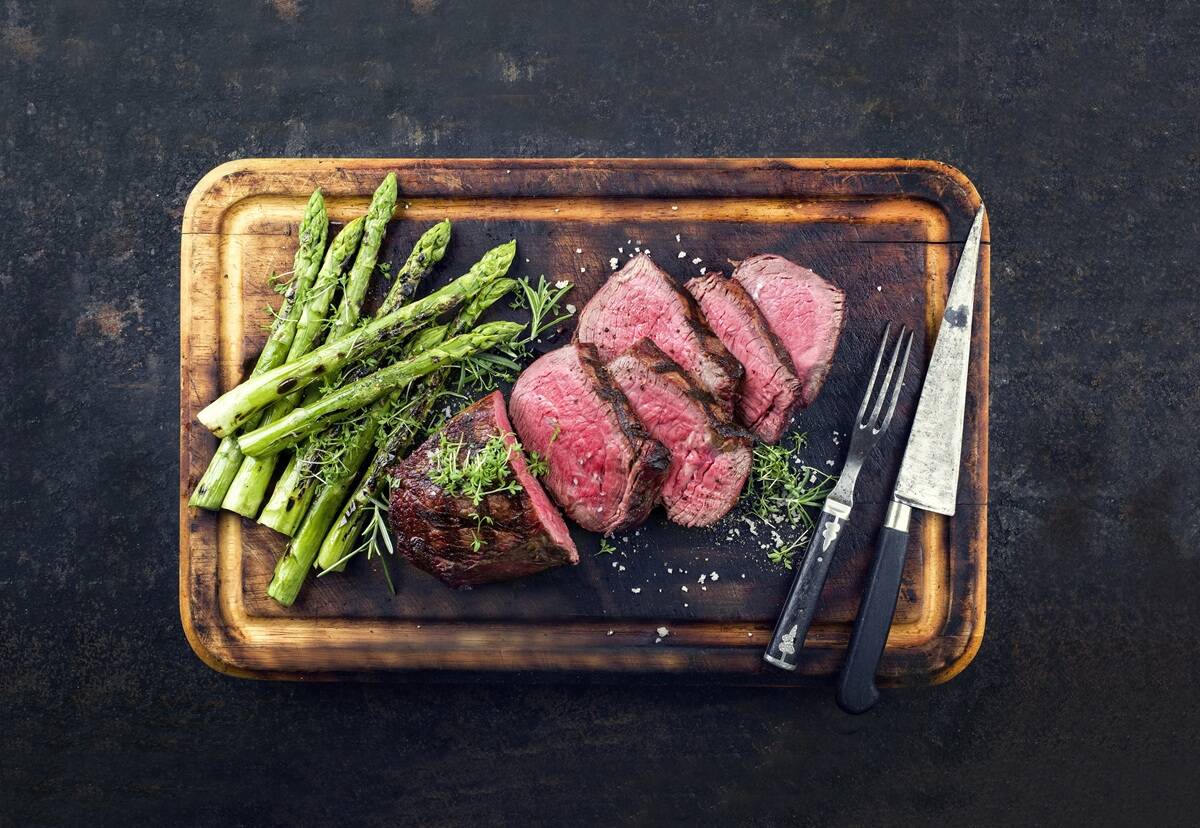
Building demand together: The impact of Canada’s beef import levy
The beef import levy has become a central tool for ensuring balance in Canada’s beef industry
Dry pregnant cows are the main group of animals that can graze mature forages. Energy and protein are the first two nutrients to consider when using these feedstuffs. Requirements increase as cows advance in pregnancy (see Table 1 below). Preventing weight loss (energy) and maintaining rumen function by maintaining rumen microbial populations (protein) are key to keeping animals healthy.

Changes in plant quality
Forage quality depends on soil fertility, weather conditions and species present. As forages mature, quality and digestibility decrease. It is common for grasses to contain 12 to 15 per cent protein between flowering and seed set. After this, protein levels can decrease by one to 1.5 per cent or more per week. Some grasses and crop aftermath can contain six per cent protein or less when fully mature.
Fibre content increases as plants grow and mature. The two fibres of concern are acid detergent fibre (ADF) and neutral detergent fibre (NDF). Some energy systems use ADF to calculate energy content in forages (see ‘Using NDF and ADF to Balance Diets’ at the University of Missouri Extension website).
NDF is used to estimate voluntary feed intake. The limit for NDF intake is between 1.2 to 1.5 per cent of body weight. With more mature forages, do not expect more than 1.2 per cent intake.
Concerns
A low-protein forage is usually low in energy. Deficiencies of both increase the risk of abomasal impaction. When protein is deficient, the reproduction of the different microbial populations decreases. This reduces fibre digestion, especially NDF. Lower feed passage rates reduce the amount of feed that an animal can consume daily. This further reduces protein and energy intake, which worsens the situation.
From the Merck Veterinary Manual: “When protein is moderately to severely deficient, an animal will reduce feed intake or stop eating completely. Distention of the abdomen can occur. The amount of manure produced decreases. If this situation continues, the animal will become weak and experience weight loss.”
From my observations, when fibre digestion is reduced, manure appearance changes. With adequate protein, the pat appears to be flat and smooth. When protein is deficient it becomes rougher in appearance and is not flat. As the deficiency increases, the shape becomes pyramid-like and eventually similar to horse manure.

Protein supplementation
To resolve the protein shortage, you must feed higher-quality hay, pellets or supplements. These products also contain energy.
At the start, feeding every day is recommended. Once rumen function is restored, feeding once every second or third day is possible. The amount depends on the extent of the deficiency. For example, a 1,400-pound cow in late pregnancy, consuming 28 pounds (dry matter) of mature forage that contains six per cent protein requires five pounds of a 14 per cent protein hay per day. If feeding every second day, five pounds of hay or an 18 per cent protein dehydrated alfalfa pellet is required.
Pelleted grain supplements are a good option. If feeding on the ground in a pasture, a pelleted product has less waste compared to a rolled or processed feed placed on the ground. Another advantage is the addition of minerals, trace minerals and vitamins, which reduces the reliance on free-choice mineral consumption.
There are various molasses-based protein products in liquid, tub or block form. These are advantageous for extended-range situations when it is not possible to supplement every two or three days, or it is difficult to supplement with hay or pelleted feeds.
Other nutrients to consider
With over-mature forages, macro and trace minerals are often deficient. Calcium is commonly deficient in pasture grasses, slough hay, fenceline hay, forage seed aftermath (i.e. timothy), and cereal chaff piles. Supplying a high-calcium mineral is recommended. Improving the calcium-phosphorus ratio in the consumed feeds can improve overall metabolic efficiency of the animal. Use a product that has a 4:1 or 5:1 calcium to phosphorus ratio. If possible, include salt in the mineral to improve intake. Animals are not inclined to eat limestone, the calcium source in the mineral. Including liquid or dry molasses, wheat mids, distillers products, a flavouring agent or garlic into the mineral will improve free-choice intake.
If feed test results are available, evaluate the status of the other minerals. Magnesium is often deficient. Copper, manganese, zinc and selenium can also be deficient. If animals are grazing lowland areas that have a high water table, manganese content in the forages can be two or three times higher than what is found in forages that are grown in drier conditions.
Benefits of grazing over-mature forages
Despite the concerns around protein and other nutrients, there are clear benefits to grazing over-mature forages. A Beef Cattle Research Council/Canfax production report from 2020 showed a range of 82 cents per head per day winter feed costs between swath grazing and drylot feeding. The benefits of grazing over-mature forages may not provide the same benefit due to additional supplementation requirements, but there will be reduced variable costs by not running equipment to provide feed.
The second benefit is two-fold. First, by grazing over-mature forages the manure is dropped in the field, reducing costs associated with cleaning corrals and hauling manure. Second, research done at the University of Saskatchewan found that nitrogen retention was 40 per cent higher on land where cows were winter grazing compared to areas where manure was hauled out from the corral.
Barry Yaremcio holds a master’s degree in animal science (nutrition) and a bachelor in agriculture (animal science). He worked in extension for Alberta Agriculture for several years and now is a ruminant nutritionist and production management consultant. Reach him through beefconsultant.com.

